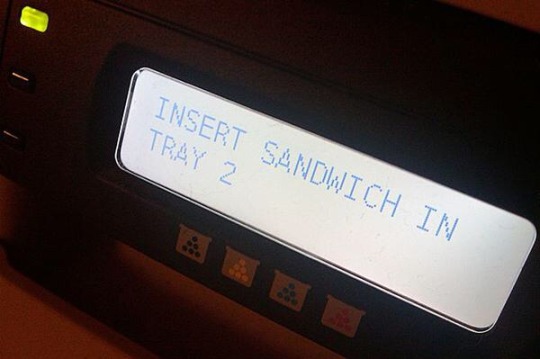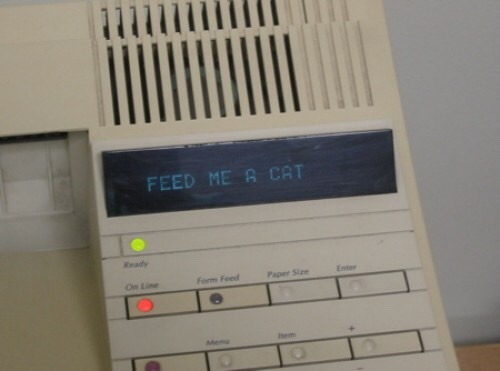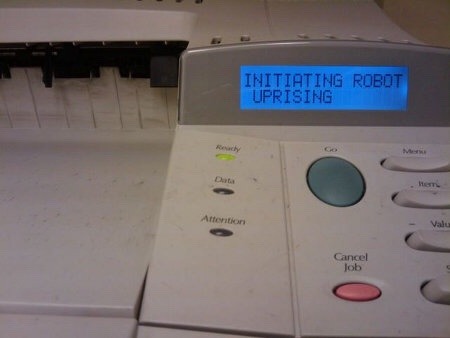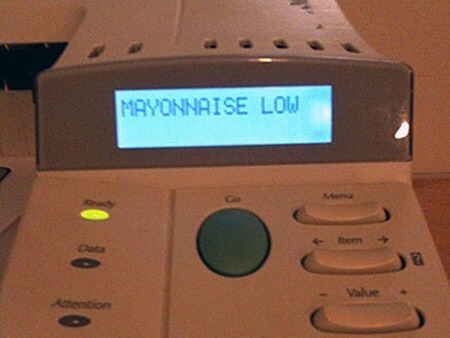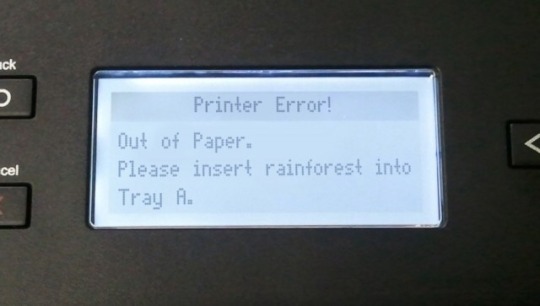d.a.sch. YLAN:LEXANDER:ENKER I like Digital & Social Media Technology as it pertains to film and filmmaking. I also really like movies. So I write about them.
Don't wanna be here? Send us removal request.
Link
This looks like a great opportunity to attend a wonderful Festival/conference. I may apply, but I figure there are so many more people that are financially deserving of this opportunity. Maybe you are one of them.
4 notes
·
View notes
Photo
Love this

*Oh, using RAINBOWS, huh? Well we all know what THAT means
106 notes
·
View notes
Text
This is a horrriiiibllle idea
Silicon Valley’s Dirty Secret
Silicon valley has a dirty secret. Everybody in the valley knows about this secret, many people outside of the valley know about this secret, and most of these same people are not even aware that this secret is a problem. I am going to bring this secret to your attention, explain why it is a problem, and offer a solution that could change startup investing forever.
A few days ago, Brian Chesky wrote a brief and interesting article on Medium titled “7 Rejections” — The summary of this already brief article is that AirBnb was trying to raise $150,000 at a $1,500,000 valuation not so long ago and one by one, otherwise intelligent venture capital firms rejected him for myriad reasons. I am guessing that most of these firms are kicking themselves now that AirBnb is worth upwards of $24,000,000,000.
Somewhere in the midwest a brilliant young team (Jen, John and Pat) is solving a real problem. They have stumbled upon a technological solution to a problem so large and so meaningful, that if they succeed they will all become billionaires many times over and they will change the world. The investor who discovers them and has the foresight to invest early will be called an oracle, will buy a new matching pair of Gulfstream G650s and will be forever anointed as American royalty.
The problem is that within a reasonable proximity of these founders, there are no venture firms, so they will not be discovered. Without the capital needed to hire additional engineers, sales people, and build infrastructure, their idea will wither and die. This is not the dirty secret.
Jen, John & Pat have a few practical choices at this point:
Apply for and hopefully get accepted into one of the many tech accelerators where a team of humans will accept or reject their application. They will then spend three months learning how to pitch to human venture capitalists. The culmination of their accelerator participation will be a demo day where they may (depending on the accelerator) raise money. If they don’t raise money at the demo day, the accelerator will begin working their rolodex and try to make introductions for the startup.
Move (at least temporarily) to Silicon Valley where they can essentially stop (at least temporarily) working on the project to go into full fundraise mode. This involves meeting a lot of humans, shaking a lot of hands, going to a lot of coffees, revising the pitch deck many times and possibly even modifying their initial vision to match what investors are looking for. Pitch, network, rinse and repeat for somewhere between 6 and 18 months before either raising funding or giving up.
Somewhere in a short office building overlooking Sand Hill road an associate at a venture firm is being pitched by Jen, John and Pat. Its roommate from college introduced it to the startup so it took a meeting. This nice, human venture capitalist finds Jen intelligent, likes John’s MBA, and thinks Pat is cute so it listens attentively but occasionally its mind wanders.
“Did I remember to send that memo?” “I really shouldn’t have had that third martini last night.” “This is a great idea.” “This is a terrible idea.” “God I need to piss.” “This is a mediocre idea and I’m not going to recommend funding it, but I need to keep my pipeline full so I don’t look lazy.” “What would Marc Andreessen do?”
These are all fleeting thoughts that may be going through the venture capitalist’s mind while listening to the pitch.
If the venture capitalist human decides that the idea has merit, the team is good, the stage is right, and the startup is a match for their investment thesis, they may schedule another meeting.
If all goes well the VC process goes something like this (ymmv):
Human pre-pre-screens by looking at the source of the referral.
Human pre-screens by meeting the team and listening to the pitch.
Human evaluates the investment opportunity.
Human brings the team back for a screening where more humans listen to the pitch and evaluate the investment opportunity.
Humans issue term sheets, perform due diligence.
Humans meet, sign the term sheets, and another human wires the funds.
Somewhere at an idyllic country club, a room full of middle aged and retired business humans listen to a pitch after having a few glasses of wine and mingling. This is a well organized angel group.
The team went through a similar process to present to the angel group. Perhaps a cold call opened the door but most likely a fellow angel referred them, pre-pre-screening followed by pre-screening, followed by screening, followed by a dinner pitch, followed by due dilligence and a group of humans writing checks.
Somewhere over lunch, a nice middle aged human reviews Jen, John & Pat’s pitch deck. The deal was referred by a friend. It likes the idea and after a few more meetings brings the pitch deck to some friends to gauge early interest and do some early due dilligence. It decides to go ahead with the idea and flags it online as an investment it is making. This is an Angel List Syndicate.
In every one of these funding scenarios there is one common element. The human.
Human relationships are virtually the only way that the deal gets in front of the right people and gets taken seriously in all cases. The human mind has to be sharp, focused, well versed in many subjects, and well aware of the rest of the startup ecosystem to fully comprehend and evaluate the opportunity at hand. The human doing the pitching has to bring their A-game to the pitch and be a social, likable, good presenter in order to convince the other humans to fund the idea.
This is Silicon Valley’s dirty secret. Despite the claim that “Software is eating the world” — Startup investing is still as notoriously relationship and location driven as it was 20 years ago. The valley wants everything to be automated, AI driven, efficient and meritorious, except our own process of investing in startups. Whether venture capital, accelerator, traditional angel money, or online angel money, the ability to get funded is only partly about how good your idea is, it is largely about who you know and how well you present. This is the problem.
What is the solution? Automated early stage investing.
Automated investing is not a new idea. Blackbox trading has been happening in markets for a long time and has been wildly successful. If you haven’t read the $13 Billion Mystery Angels article, it is worth reading. When blackbox trading was first suggested, humans said “no way a computer can do this job!” and they were wrong. Sentiment analysis allowed computers to start interacting with markets based on human moods and feelings.
Similarly if you say that there is no way a computer can source, evaluate and make an early stage venture capital investment, you are wrong. Not only can it do the job, I believe it can do the job better. Advances in machine learning combined with the availability of massives data sets have set the stage for computerized early stage investing.
A computer can do a better job of evaluating a market than a human.
A computer can do a better job at evaluating a business idea than a human.
A computer can do a better job at evaluating team dynamics than a human.
A computer can do a better job at being impartial than a human.
A computer doesn’t worry about social capital.
A computer doesn’t worry about its next fund.
Silicon Valley has a dirty secret and that secret is that it is still the most human (and thus relationship driven) asset class on the planet. The irony is that most venture funds are actively funding automation and reducing the need for humans in many roles of society. They just aren’t funding themselves out of a job, yet.
Someday venture capital will be a fully automated system where startups are found, vetted and funded by machines. Some venture capitalist will realize this inevitability and fund that vision. That particular venture capitalist will buy a matching set of Gulfstreams and be held up as an oracle. In that world LP’s will pick algorithms instead of people… Until the LP’s are replaced by machines that is.
If you like this article, please recommend it by clicking the heart and by sharing it on social networks. I write for fun about topics I find interesting so without your social validation who knows if I will write anymore.
Also Read: New York Times is Shutting Down & Defensibility Excuse
https://medium.com/@arlogilbert/silicon-valley-s-dirty-secret-67b1f0efdce
12 notes
·
View notes
Quote
The modern conservative is engaged in one of man’s oldest exercises in moral philosophy: that is the search for a superior moral justification for selfishness.
John Kenneth Galbraith
(via stoweboyd)
99 notes
·
View notes
Photo


antenna
Conceptual art object by vtol is a police truncheon that sends a text message each time it is used by force:
vimeo
This device is a police truncheon equipped with a GSM-module which sends a short phone message with the text “Mom, I hit a man” every time when someone uses it to hit people. The number of addressee is fixed in the code of the program and can’t be changed.
The idea of the project is to create a device which strictly controls the cruelty of police. As all the standard methods of control are ineffective, this project suggests the maternity as the last stronghold of human kindness and responsibility.
More Here
789 notes
·
View notes
Photo

A-ha Deep Dream
The most amusing implementation of the #deepdream meme yet, put together by Anthony Antonellis:
vimeo
Link
678 notes
·
View notes
Note
I love this.
I've been thinking seriously lately about getting into trend forecasting, specifically with regard to emerging net culture and larger pop culturism. The only TF company I know like this is k-hole who brought normcore to popularity so I was wondering if you knew other similar TF companies or how to get into the industry? Thanks! I wanna make the zeitgeist my life.
Right.
First thing you need to know is that K-Hole aren’t a real trends agency but rather conceptual art. Or, um, well, they weren’t a real trends agency. Now they might be. It’s kind of complicated.
But basically whilst they’re awesome, they are also very special snowflake and not actually a firm you can join.In this post I’ll outline how you can actually build a career in this space from a mostly-London perspective.
Many thanks to Scott Smith of Changeist who has provided 90% of the intel. (Though I’m not sure you can work for him either, he’s very boutique.)
1. Trend forecasting is often not called trend forecasting
‘Trends’ and ‘cool hunting’ were buzzwords in the 1990s, but the rise of the internet made knowing what denim brands were hot in Tokyo less of a leverageable advantage.
“Innovation” is the present buzzword - “innovation agencies” and “innovation consultancies” are one place you find this type of work. “Brand consultancies” and “brand strategy” firms are another - and the cool (expensive) end of qualitative market research (or “consumer research”) a third.
2. Accept that what you’re doing is capitalism
Companies don’t hire you because you are especially zeitgeisty. They hire you because you can guide them to make more money - either by making products that are more relevant to consumers’ lives, or communicating (marketing) those products more effectively.“Here is a cool thing going on in culture” is not valuable business advice. “You should do X because of Y cool thing going on in culture, and you’ll achieve result Z” is.
Accept that what you’re doing is business consultancy and read up on competitive advantage, branding, positioning and so on. Ultimately it’s knowing this stuff that makes you better at trends consultancy - not just developing some terrifically expensive intuition about brands… *cough Cayce Pollard*
2a. You can still make K-Hole style conceptual art about capitalism and brands
You just won’t be doing it as your main job. Or getting paid for it - a girl can’t eat Fast Company articles or Tumblr likes, more’s the pity.
In fact, making pretty decent money in this industry and then going freelance as a consultant is probably one of the best ways to clear time & space for making art - and arguably much more viable than traditional art routes of MFAs, teaching jobs, writing and so on.
Go talk to Benedict Singleton (a design strategist) as one example.
3. Some firms to look at
Here are some actual companies who offer jobs in this space:i) Traditional futures firmsFocused on consumer trends, rather than being the leaders at technology trends, geopolitical futures, or fashion trends_Future Foundation_The Future Laboratory
ii) Fashion forecasting_WGSN (the big guns, industry behemoths)_Editd (more of a tech start-up)
iii) Trends editorialCompanies taking the most journalistic approach to trends._Protein_Stylus (ex-WGSN founders)
iv) Ad agency landEach of the big ad agency groups has some kind of trends unit, e.g._Lowe Counsel (within Mullen Lowe Group, within Interpublic_Landor (within WPP)_Sparks & Honey (within Omnicom)
Scott Changeist notes: “doesn’t seem like you have to have too much of a background to get into those places/roles, just know people and be able to emulate others doing same work”
v) Stand alone agenciesVariously in this brand-y, innovation-y, qualitative kind of consumer space._Dragon Rouge_Flamingo and many more.
4. How to get a job with these firms
Write 3 decent blog posts about consumer trends issues, and publish them somewhere like Medium (more business-y than Tumblr)
Acquire some points of view on brands, contemporary trends, and consumer needs
Contact named individuals at these agencies (research directors, not HR) asking if they offer internships and explaining (i) why you’re interested in them and (ii) why you’re awesome
If they say they’re not doing internships, ask to meet them for a get-to-know-you coffee anyway, and mine them for information about where you should be applying
Refuse any internships that aren’t paid (it’s against the law)
Internships will turn into paid jobs about half the time, as a rule of thumb. Key thing is never to wait for advertised job postings but be proactive.Good luck.
If, after all this, you’re still interested in working in this field?
61 notes
·
View notes
Text
Ariely's UPSIDE OF IRRATIONALITY: using irrational cognitive blindspots to your advantage

Behavioral economist Dan Ariely’s
The Upside of Irrationality
is the followup to his wildly successful (and wonderful)
Predictably Irrational
, a book summarizing his many years of ground-breaking research on the ways in which people reliably behave in ways that run contrary to their best interests (something that flies in the face of neoclassical economic orthodoxy).
Upside of Irrationality is a mostly successful attempt to transform the scientific critique of the “rational consumer” principal into practical advice for living a better life. “Mostly successful” only because some of our habitual irrationality is fundamentally insurmountable – there’s almost nothing we can do to mitigate it.
But even when Ariely fails to deliver easy-to-follow advice for improving our lives, he still does deliver the same thought-provoking, fascinating experimental evidence for irrationality itself. For example, the sections on online dating (the return on your investment in an online dating service is so poor that you might as well not bother) and charitable giving (it’s nearly impossible to feel the visceral sympathy for a million sufferers in some terrible genocide that you feel for a man choking to death at the next table) are both engrossing and well-written, but the advice that Ariely gives on both amounts to, “Be aware that you’re apt to make a bad decision in these situations.”
On the other hand, there are sections in which the science of irrationality is readily converted into practical techniques for living better, and these really shine. My favorite is the section on adaptation, that is, the way in which both terrible pain and incredible delights fade down to a kind of baseline normal over time. Ariely points out that adaptation can be slowed or even prevented through intermittent exposure to the underlying stimulus – that is, if you take a break, the emotional sensation comes back with nearly full force.
Here’s where our intuitive response is really wrong: we have a tendency to indulge our pleasures without respite, and to take frequent breaks from those things that make us miserable. This is exactly backwards. If you want to maximize your pleasure – a great dessert, the delight of furnishing your first real apartment after graduation, a wonderful new relationship – you should trickle it into your life, with frequent breaks for your adaptive response to diminish. If you want to minimize your pain – an unpleasant chore, an awful trip – you should continue straight through without a break, because every time you stop, your adaptive response resets and you experience the discomfort anew.
Also outstanding is the section on motivation in the workplace, and the way in which imbuing work-tasks with even a little meaning can make them much easier to complete and much more satisfying. There are several pieces of good, practical information here, all couched in Ariely’s breezy, easy to read style. Even if Ariely’s research doesn’t always neatly translate into simple heuristics, he’s such an interesting writer and thinker that I’ll read anything he writes.
The Upside of Irrationality
17 notes
·
View notes
Text
DuckDuckGo search engine traffic increases 600% since Snowden revelations

DuckDuckGo, a search engine that doesn’t track user data, is growing like crazy, with three billion searches a year.
Gabriel Weinberg, who founded DuckDuckGo in 2008, explained to The Guardian why people are flocking to his search engine:
“Google tracks you on all of these other sites because they run huge advertising networks and other properties like Gmail and photos … so they need that search engine data to track you. That’s why ads follow you round the internet,” said Weinberg.
Read the rest…
61 notes
·
View notes












